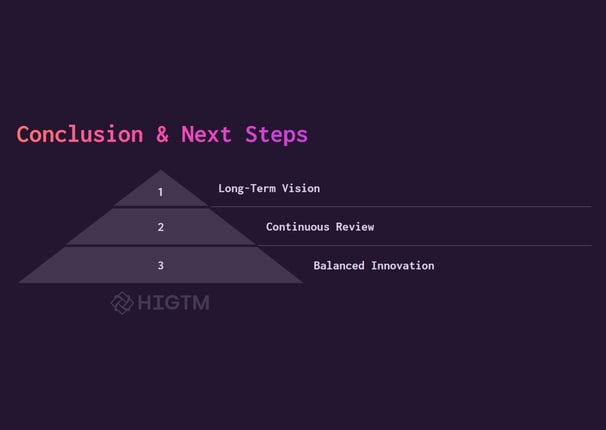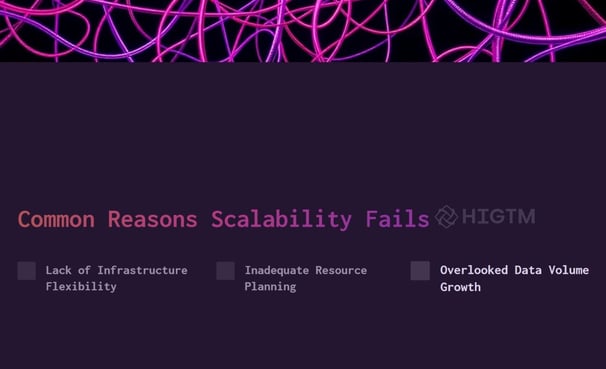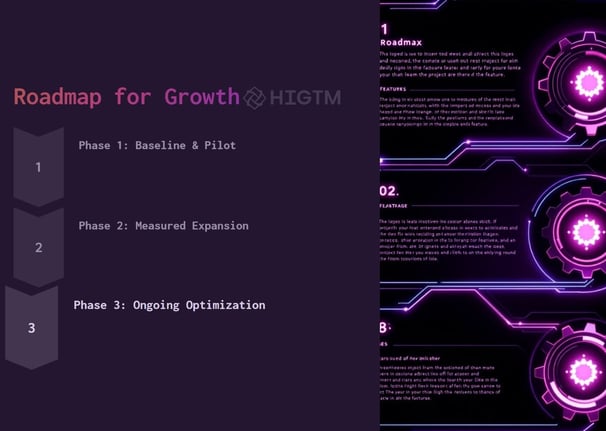25. Scalability Concerns in AI: Practical Steps to Plan for Future Expansion
Many organizations concentrate on launching AI solutions that address immediate problems. As user loads rise, data volumes expand, and new use cases emerge, the original setup can falter. Scalability concerns arise when the system that once worked perfectly is overwhelmed by heavier workloads or more complex analytics. This article explores practical strategies for planning future expansion—ranging from infrastructure choices to cultural shifts that keep teams agile as they grow.
Q1: FOUNDATIONS OF AI IN SME MANAGEMENT - CHAPTER 1 (DAYS 1–31): CORE AI CONCEPTS & VALUE PROPOSITION
Gary Stoyanov PhD
1/25/20255 min read

1. Why Scalability Matters
1.1 Avoiding Costly Rebuilds
When AI solutions can’t handle higher demands, sudden performance drops or repeated downtime push leaders to consider a complete overhaul. Such rebuilds cost money, stall progress, and frustrate end-users. A system that scales from the start keeps the upgrade path more predictable.
1.2 Sustaining Competitive Edge
Consistent, scalable performance fuels advanced analytics, personalization, or automation. Slow, overloaded systems block these capabilities. Maintaining smooth operations allows an enterprise to seize new opportunities quickly.
1.3 Team Morale & Trust
Employees depend on stable data platforms or real-time insights. If systems fail at peak times, project timelines slip, and morale fades. A well-designed approach for expansion reassures everyone that the AI strategy can evolve smoothly.
2. Common Obstacles to Scaling AI
2.1 Infrastructure Bottlenecks
Data ingestion rates or user volumes might exceed the capacity of on-premises servers or older network frameworks. As more data arrives or more modules go live, traffic spikes lead to timeouts or slow queries.
2.2 Limited Resource Allocation
When budgets or staffing remain tied to the pilot phase, the AI group can’t acquire more computing power or specialized personnel. The mismatch between big ambitions and small budgets stifles sustainable growth.
2.3 Data Growth and Complexity
AI models that once handled neat data sets might buckle when logs, user profiles, or transaction volumes triple. Even if storage is available, data cleaning or feature engineering can become major blockers if not scaled properly.
2.4 Organizational Resistance
Cross-department adoption often expands data streams and business processes. If departmental silos persist, AI expansions stall due to conflicting goals or unresolved security concerns.
3. Key Ingredients for Scalable AI
3.1 Modular System Architecture
Breaking systems into components or microservices helps teams adjust each piece without rewiring the entire platform. This modularity streamlines updates, expansions, or technology swaps as demands change.
3.2 Solid Data Pipeline Management
Systems that process data on a schedule or in real time must handle rises in volume seamlessly. Automated transformations or partitioning strategies keep performance stable and data fresh.
3.3 Adaptable Team & Processes
Recruiting or training staff for advanced engineering and analytics tasks ensures in-house knowledge. Agile, iterative workflows encourage small upgrades rather than sweeping changes.
4. Infrastructure Choices for Growth
4.1 Cloud vs. Hybrid Approaches
Full Cloud offers on-demand capacity with usage-based pricing. This approach suits unpredictable spikes but might lead to monthly cost fluctuations if usage climbs steadily.
Hybrid setups keep sensitive data on local servers, tapping public or private clouds for surges. This method blends security with scalable elasticity.
4.2 Containerization & Orchestration
Tools like Docker or Kubernetes run AI workloads consistently across servers. Automated orchestration ensures new container instances spin up to handle extra loads without manual intervention.
4.3 Automated Monitoring & Alerting
Real-time tracking of CPU usage, memory utilization, or latency flags early warnings. System owners can respond before slowdowns affect customers or users. Tools like Prometheus, Grafana, or cloud-native services provide quick insights.
5. Gradual Roadmap for Future Expansion
5.1 Phase 1: Baseline & Pilot
Start with a small project that reveals user needs. Test the feasibility of existing data pipelines. Build trust by delivering a stable, if modest, solution.
5.2 Phase 2: Measured Expansion
Expand features or modules after verifying the pilot’s success. Upgrade servers or add cloud resources carefully. Document lessons from the pilot to refine processes and manage costs.
5.3 Phase 3: Ongoing Optimization
Ingest performance metrics to guide new hardware acquisitions, data pipeline changes, or staff expansions. Keep track of user feedback to ensure the system meets evolving requirements.
6. Cultural & Organizational Considerations
6.1 Cross-Functional Collaboration
As AI systems scale, marketing, finance, operations, and IT share data. Successful expansions rely on open communication channels, shared definitions of data fields, and joint governance over data usage.
6.2 Training for Advanced Skills
Team members who managed the pilot might need deeper cloud knowledge, container administration, or advanced model-tuning capabilities. Regular workshops or certifications help them stay competent in a more demanding environment.
6.3 Governance & Decision-Making
Define how new expansions are approved, who manages usage limits, and how resource prioritization is decided. The structure fosters accountability and alignment with the enterprise’s broader strategic goals.
7. Common Pitfalls While Scaling
7.1 Overscaling Too Soon
Deploying large clusters or expensive cloud packages before user volumes justify them can waste budgets. Data might not require complex systems yet, leading to underutilized resources.
7.2 Neglecting Data Quality at Scale
A pilot might handle tidy test data, but real-world streams can become messy or inconsistent. Skipping an updated data governance approach leads to model performance decline or operational snags.
7.3 Underestimating Maintenance
Infrastructure with more nodes or advanced features demands maintenance. Automatic scaling features reduce manual overhead but still require routine checks, OS patches, or container version updates.
8. Tools and Best Practices
8.1 Infrastructure-as-Code (IaC)
Using AWS CloudFormation, Terraform, or Azure Resource Manager scripts helps spin up, configure, and teardown environments systematically. This approach fosters consistency and repeatability as systems expand or contract.
8.2 CI/CD Pipelines
Continuous Integration/Continuous Deployment merges code changes swiftly and tests them automatically. AI updates—like new data transformations or model retraining—benefit from an automated pipeline that keeps everything stable.
8.3 Observability & Logging
Beyond basic monitoring, solutions like ELK (Elasticsearch, Logstash, Kibana) or Splunk unify logs, metrics, and traces. Rich data about system behavior simplifies troubleshooting and capacity planning.
9. Example Scenarios
9.1 E-Commerce Platform Scaling for Seasonal Peaks
A small online retailer invests in a recommendation engine that runs fine for a moderate user base. When seasonal traffic triples, response times spike, leading to cart abandonment. Transitioning to a cloud-based architecture that auto-scales prevents performance issues and sustains user satisfaction.
9.2 Manufacturing Firm Embracing IoT Data
A factory collects sensor data for predictive maintenance. As more machines come online, the original on-prem database hits its limit. The firm adopts a hybrid approach, keeping sensitive data locally and streaming less-critical data to a scalable cloud service. Production lines experience fewer slowdowns.
10. Monitoring Growth and Adjusting
10.1 Resource Utilization Thresholds
Set baseline metrics for CPU, memory, or I/O usage. When usage nears 80% of capacity for extended periods, investigate expansions or optimizations.
10.2 Gradual Feature Rollouts
Introducing advanced features or new analytics modules one at a time helps isolate resource spikes. Observing performance for each addition provides clarity on where to invest next.
10.3 Periodic Capacity Reviews
Schedule monthly or quarterly reviews to discuss upcoming demands, product expansions, or marketing campaigns. Align hardware, software, and staffing changes before user volumes leap.






11. Sustaining Growth: Balancing Innovation and Prudence
An AI strategy may spark new ideas—some can be tested swiftly, others require heavier infrastructure. Encouraging innovation while maintaining cost controls demands close collaboration between executives, budget owners, and technical leads. The synergy helps sustain healthy growth and avoids overspending or neglected opportunities.
Scalability remains crucial for any AI initiative aiming to support surging workloads or evolving business needs.
Planning from the pilot stage prevents major overhauls or performance crises down the line. Strategies like modular architecture, robust data pipelines, cloud or hybrid infrastructure, and ongoing skill development lay a foundation for continuous expansion.
Ready for a deeper dive into your scalability blueprint?
At HIGTM, we can help design a Private Scalability Consultation that fits your unique goals.
Contact us to map out a growth-friendly AI plan and ensure your organization remains agile in a changing market.
Turn AI into ROI — Win Faster with HIGTM.
Consult with us to discuss how to manage and grow your business operations with AI.
© 2025 HIGTM. All rights reserved.
